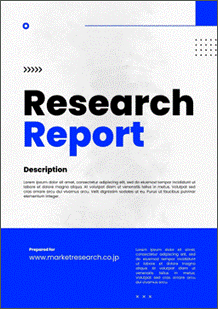 | • レポートコード:C-MOR-100020 • 出版社/出版日:Mordor Intelligence / 2019年10月 • レポート形態:英文、PDF、120ページ • 納品方法:Eメール(受注後2-3営業日) • 産業分類:医療 |
| Single User | ¥629,000 (USD4,250) | ▷ お問い合わせ |
| Multi User | ¥703,000 (USD4,750) | ▷ お問い合わせ |
| Site License | ¥888,000 (USD6,000) | ▷ お問い合わせ |
• お支払方法:銀行振込(納品後、ご請求書送付)
レポート概要
| 本調査レポートでは、オーファンドラッグ (希少疾病用医薬品) の世界市場について調査・分析し、オーファンドラッグ (希少疾病用医薬品) の世界市場規模、市場動向、市場環境分析、市場展望、セグメント別分析、地域別分析、関連企業情報など以下の構成でお届け致します。 |
Market Overview
The orphan drugs market is expected to register a CAGR of 11.5% over the forecast period. Factors that are responsible for the growth of this market include market exclusivity for orphan drug developers, the rising prevalence of rare diseases, and favorable government policies.
The market is expected to register an increased CAGR during the forecast period because the prevalence of rare diseases among the global population has been increasing in recent years. To tackle this issue, both developing and developed countries have formulated regulations that promote the development of drugs for rare diseases, as well as make sure that these drugs are easily available to the patients. Currently, the average approval time for non-orphan drugs is around 13 months and the same for orphan drugs is much less at around 10 months. The European Union has implemented similar policies for the development of these drugs and the European governments have individually implemented these policies in their countries. Some of these are Italy’s AIFA 5% Fund, Belgium’s Special Solidarity Fund, and France’s Temporary Authorizations for use. Even the countries in Asia-Pacific have also followed similar steps with countries like Japan, South Korea, and Taiwan with initiatives like the Revised Orphan Drug Regulations and Orphan Drugs Guidelines (2003). These initiatives offered tax credits and subsidies to both the patient as well as the pharmaceutical companies. These policies in various countries around the world have evolved the market studied, that has been growing at a healthy rate in recent years.
Scope of the Report
Orphan drugs can be defined as a molecule intended to treat a rare disease. The rare disease, as the name suggests, has a low prevalence rate and has been defined differently across geographical locations.
Key Market Trends
Biological Orphan Drug is Expected to Account for the Highest Market Share
In the type of drug segment, biological orphan drug may register the highest market share and is expected to grow at a good pace, during the forecast period. This high market share is due to the higher cost of biological drugs compared to non-biological ones. The recent trend of approval of biological orphan drugs for multiple indication has resulted in growth and has been an encouraging factor for new and established market players to enter in this market. Another reason is that the biological drugs have been used for treating rare disease for a long time. The most focused orphan disease, i.e., cancer, which has a higher prevalence rate in the developed world, has been effectively treated by biological drugs with fewer side effects.
North America Dominates the Market and Expected to do the same in the Forecast Period
North America currently dominates the market for orphan drugs and is expected to continue its stronghold for a few more years. In the North American region, the United States holds the largest market share. One of the reasons for market growth is that in the United States, a drug designated orphan drug status receives seven years of marketing exclusivity upon FDA approval for a specific indication, tax credits, and user fee waiver. Since 2013, the new indication approvals have increased greatly.
Competitive Landscape
The orphan drugs market is moderately competitive and consists of quite a few major players. In terms of market share, a few of the major players currently dominate the market. With the rising number of diseases and an increasing number of cases each year, a few smaller players are entering the market and holding a substantial share. Some of the major players of the market are Teva Pharmaceutical Industries Ltd, Celgene, Merck & Co. Inc., Bristol-Myers Squibb Company, and F. Hoffmann-La Roche AG, among others.
Reasons to Purchase this report:
The market estimate (ME) sheet in Excel format
Report customization as per the client’s requirements
3 months of analyst support
1 INTRODUCTION
1.1 Study Deliverables
1.2 Study Assumptions
1.3 Scope of the Study
2 RESEARCH METHODOLOGY
3 EXECUTIVE SUMMARY
4 MARKET DYNAMICS
4.1 Market Overview
4.2 Market Drivers
4.2.1 Market Exclusivity for Orphan Drug Developers
4.2.2 Rising Prevalence of Rare Diseases
4.2.3 Favorable Government Policies
4.3 Market Restraints
4.3.1 High Per Patient Treatment Cost
4.3.2 Limited Patient Pool for Clinical Trials and Product Marketing
4.4 Porter’s Five Forces Analysis
4.4.1 Threat of New Entrants
4.4.2 Bargaining Power of Buyers/Consumers
4.4.3 Bargaining Power of Suppliers
4.4.4 Threat of Substitute Products
4.4.5 Intensity of Competitive Rivalry
5 MARKET SEGMENTATION
5.1 By Drug Type
5.1.1 Biological
5.1.2 Non-Biological
5.2 By Top Selling Drugs
5.2.1 Revlimid
5.2.2 Rituxan
5.2.3 Copaxone
5.2.4 Opdivo
5.2.5 Keytruda
5.2.6 Imbruvica
5.2.7 Avonex
5.2.8 Sensipar
5.2.9 Soliris
5.2.10 Other Top Selling Drugs
5.3 By Disease Type
5.3.1 Oncology
5.3.2 Hematology
5.3.3 Neurology
5.3.4 Cardiovascular
5.3.5 Other Disease Types
5.4 By Phase
5.4.1 Phase I
5.4.2 Phase II
5.4.3 Phase III
5.4.4 Phase IV
5.5 Geography
5.5.1 North America
5.5.1.1 US
5.5.1.2 Canada
5.5.1.3 Mexico
5.5.2 Europe
5.5.2.1 Germany
5.5.2.2 UK
5.5.2.3 France
5.5.2.4 Italy
5.5.2.5 Spain
5.5.2.6 Rest of Europe
5.5.3 Asia-Pacific
5.5.3.1 China
5.5.3.2 Japan
5.5.3.3 India
5.5.3.4 Australia
5.5.3.5 South Korea
5.5.3.6 Rest of Asia-Pacific
5.5.4 Middle East & Africa
5.5.4.1 GCC
5.5.4.2 South Africa
5.5.4.3 Rest of Middle East & Africa
5.5.5 South America
5.5.5.1 Brazil
5.5.5.2 Argentina
5.5.5.3 Rest of South America
6 COMPETITIVE LANDSCAPE
6.1 Company Profiles
6.1.1 AbbVie
6.1.2 Celgene Corporation
6.1.3 Biogen
6.1.4 Teva Pharmaceutical Industries
6.1.5 F. Hoffmann-La Roche AG
6.1.6 Bristol-Myers Squibb Company
6.1.7 Alexion Pharmaceuticals
6.1.8 Amgen
6.1.9 Merck & Co. Inc.
6.1.10 Jazz Pharmaceuticals
7 MARKET OPPORTUNITIES AND FUTURE TRENDS